Polka Dot Plant
- October 23, 2023
- 0 comment
The Polka Dot Plant, scientifically known as Hypoestes phyllostachya, is a charming and popular houseplant that’s celebrated for its vibrant and eye-catching foliage. Native to Madagascar, this small, bushy plant is characterized by its distinctive leaves, which are adorned with an array of colorful spots, resembling polka dots.
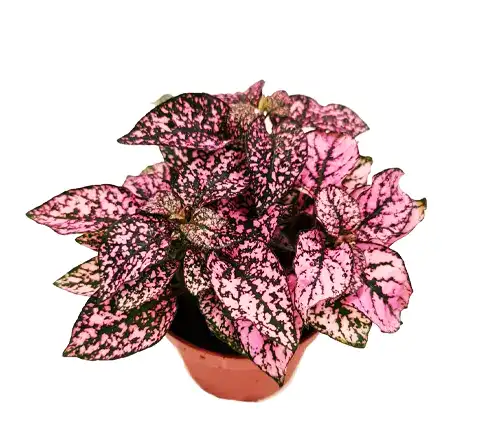
These spots can come in various shades, including pink, red, or white, making the plant a delightful addition to any indoor garden. Polka Dot Plants are relatively easy to care for, thriving in bright, indirect light and well-draining soil. They prefer consistent moisture and should not be allowed to dry out completely.
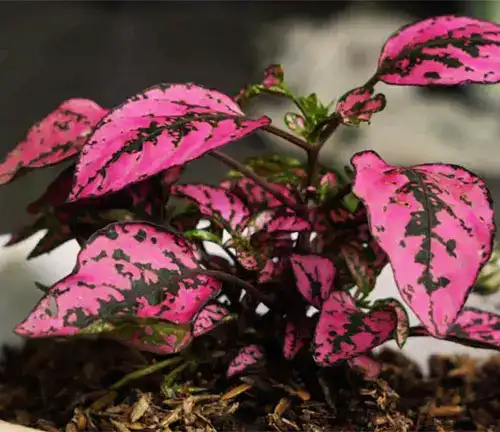
This ornamental plant not only adds a pop of color to your living space but also serves as an excellent choice for those looking to cultivate an attractive and low-maintenance indoor garden.
| Characteristics | Description |
| Scientific Name | Hypoestes phyllostachya |
| Common Names | Polka Dot Plant, Freckle Face Plant |
| Family | Acanthaceae |
| Native Region | Madagascar |
| Plant Type | Herbaceous perennial |
| Mature Height | 6 to 12 inches (15 to 30 cm) |
| Foliage | Oval-shaped leaves with colorful spots (pink, red, or white) |
| Light Requirements | Bright, indirect light |
| Watering | Keep soil consistently moist, but avoid waterlogging |
| Soil Type | Well-draining, peat-based mix |
| Temperature Range | 65-75°F (18-24°C) |
| Humidity | Prefers higher humidity levels |
| Growth Rate | Fast-growing |
| Toxicity | Non-toxic to pets and humans |
| Propagation | By stem cuttings or seeds |
| Maintenance | Prune for bushier growth; pinch off flower buds to maintain foliage vibrancy |
Botanical Beauty of the Polka Dot Plant
The Polka Dot Plant, scientifically known as Hypoestes phyllostachya, is a botanical marvel that captures hearts with its striking and unique appearance. Native to Madagascar, this enchanting plant is a testament to the artistry of nature. What makes it truly stand out are its vibrant, polka-dotted leaves. The delicate oval-shaped foliage is adorned with eye-catching spots in shades of pink, red, or white, creating a mesmerizing spectacle in any indoor garden.

Woodland Elegance
One of the remarkable qualities of the Polka Dot Plant is its ability to bring a touch of woodland elegance to your living space. With its colorful foliage, it effortlessly recreates the charm of a forest floor indoors. The juxtaposition of the freckled leaves against a pot’s backdrop gives the plant a whimsical and almost fairytale-like appeal. It’s like having a piece of the forest right at your fingertips.
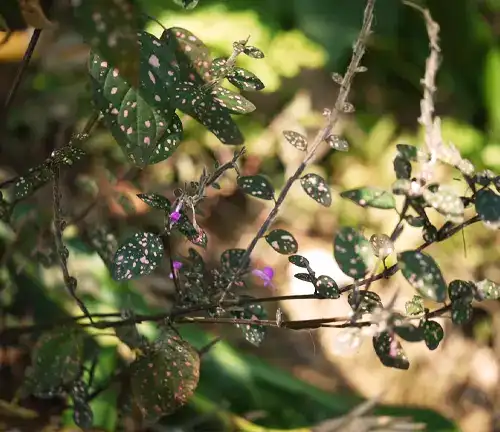
Ecological Importance
In its native Madagascar, the Polka Dot Plant plays a vital role in the local ecosystem. It provides habitat and sustenance for various insects and small animals. This plant showcases how even ornamental foliage can have an ecological importance by contributing to the intricate web of life in its natural habitat.
Cultivation and Conservation
Cultivating Polka Dot Plants is relatively straightforward, making it a popular choice for both novice and experienced gardeners. It thrives in bright, indirect light and requires consistent moisture without overwatering. With the right care, it can flourish as an indoor ornamental. As for conservation, while it’s not endangered, preserving this delightful species in its natural habitat is crucial for maintaining biodiversity.
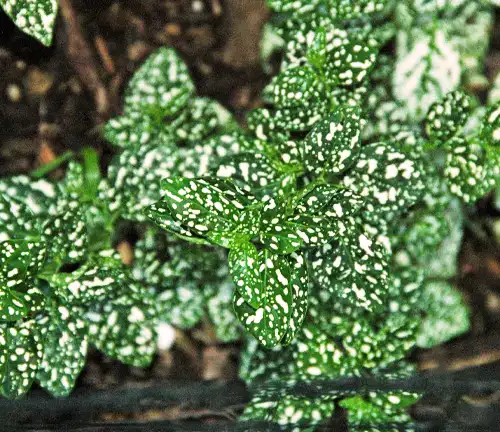
Fragrance
While the Polka Dot Plant is primarily cherished for its visual appeal, it has a subtle and pleasant fragrance that adds another layer of charm. The fragrance, though not overpowering, can be a delightful surprise when caring for this plant.
Soil Stabilization
Beyond its aesthetic qualities, Polka Dot Plants also serve a practical purpose in gardens. Their roots help stabilize soil, preventing erosion, and contributing to soil health. This feature makes them not only visually appealing but also environmentally beneficial.
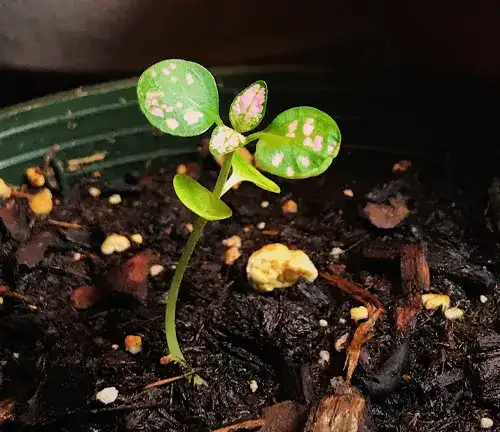
Common Uses
Polka Dot Plants are versatile and can be used in various ways. They make excellent houseplants, brightening up indoor spaces with their vivid colors. Additionally, they’re often used in gardens and landscaping to add splashes of color and a touch of whimsy. Their ease of propagation through stem cuttings or seeds makes them a favorite among garden enthusiasts.
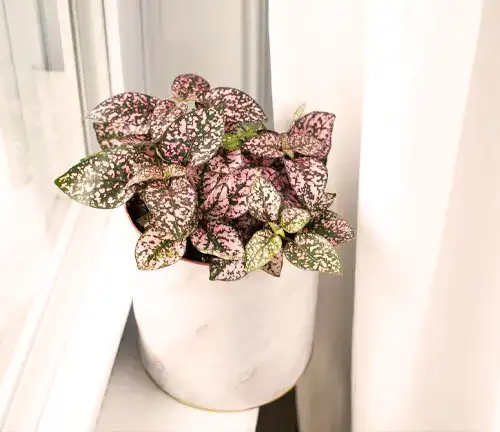
Benefits
The Polka Dot Plant offers numerous benefits, from its aesthetic appeal to its ease of care. It can brighten up any room, create a calming and natural ambiance, and even help stabilize the soil in your garden. Furthermore, its non-toxic nature ensures that it’s safe for both pets and humans, adding an extra layer of appeal to this charming houseplant.
In conclusion, the Polka Dot Plant is a botanical gem that marries beauty with ecological significance. Whether you’re a plant enthusiast or a casual gardener, it’s a delightful addition to any indoor or outdoor space, combining aesthetics and practicality with its colorful foliage and soil-stabilizing properties..
Different Species
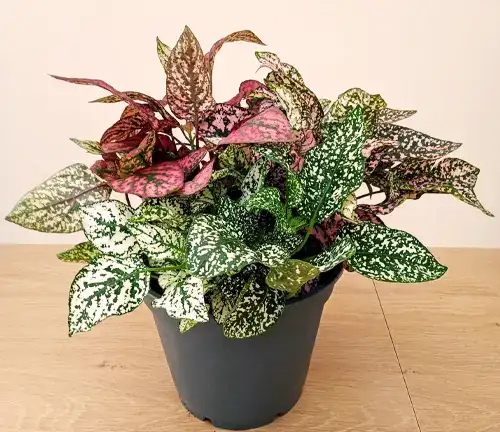
Hypoestes phyllostachya
This is the standard Polka Dot Plant and is the one most people are familiar with. It features green leaves adorned with pink, red, or white spots.
Hypoestes phyllostachya
‘Confetti
This variety has smaller leaves than the standard Polka Dot Plant and features a mix of colors, including pink, red, and white spots.


Hypoestes phyllostachya
‘Splash
The ‘Splash’ variety has larger and more pronounced spots on its leaves, creating a bold and dramatic look.
Hypoestes phyllostachya
‘Pink Splash
As the name suggests, this cultivar has predominantly pink spots on its leaves, creating a striking contrast with the green foliage.
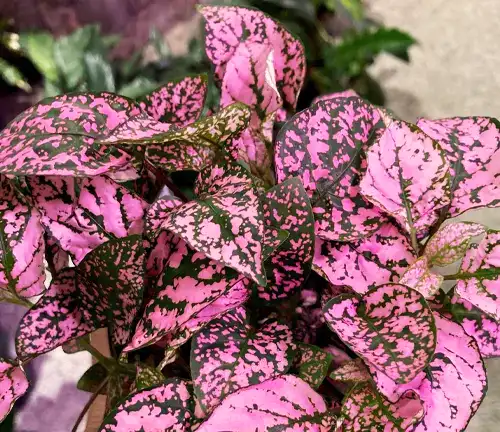
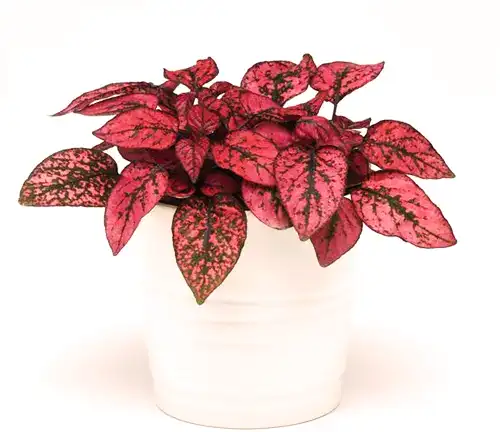
Hypoestes phyllostachya
‘Red Splash
Similar to ‘Pink Splash,’ this variety features red spots on its leaves, adding a vibrant touch to indoor gardens.
Hypoestes phyllostachya
‘White Splash
In this cultivar, the leaves are adorned with white spots, creating a softer and more subtle appearance.

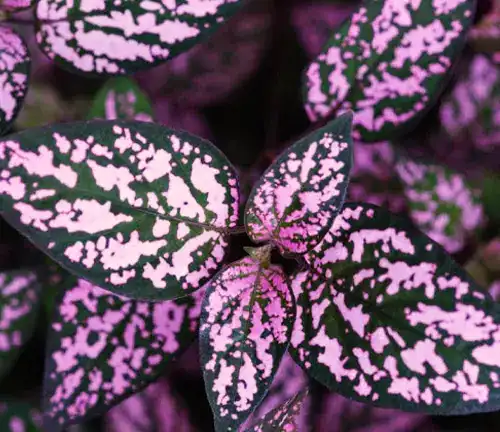
Hypoestes phyllostachya
‘Polka Dot Purple
This variety is characterized by its purplish spots, adding a unique twist to the classic Polka Dot Plant.
Frequently Asked Questions (FAQs)
- What is a Polka Dot Plant?
A Polka Dot Plant (Hypoestes phyllostachya) is an attractive houseplant known for its distinctive, spotted foliage. It features oval leaves with colorful spots in shades of pink, red, or white. - How do I care for a Polka Dot Plant?
Polka Dot Plants thrive in bright, indirect light and prefer consistently moist soil. It’s essential to avoid overwatering and ensure proper drainage. Keep humidity levels moderate, and maintain a temperature range of 65-75°F (18-24°C). - Can I grow Polka Dot Plants outdoors?
Yes, you can grow Polka Dot Plants outdoors in warm and humid climates. They are often used for landscaping to add color to garden beds or borders. However, they should be protected from direct sunlight. - How do I propagate a Polka Dot Plant?
Polka Dot Plants can be propagated from stem cuttings. Simply take a cutting with a few leaves and root it in a suitable potting mix. This is a relatively easy process. - Is the Polka Dot Plant toxic to pets or humans?
No, Polka Dot Plants are non-toxic and safe for both pets and humans. This makes them an excellent choice for households with animals or children. - Why are the leaves of my Polka Dot Plant losing their color?
The vibrant color of Polka Dot Plant leaves can fade if they receive too much direct sunlight or if they are underwatered. Ensure they are in the right lighting conditions and maintain consistent moisture. - Can I use a Polka Dot Plant for soil stabilization in my garden?
Yes, the roots of Polka Dot Plants help stabilize soil, making them useful for preventing erosion in gardens and adding an aesthetic touch to landscaping projects. - How often should I prune my Polka Dot Plant?
Pruning can help maintain a bushy and compact shape. You can prune your Polka Dot Plant as needed, but it’s typically a good practice to trim back leggy growth or spent flower buds. - Can I fertilize my Polka Dot Plant, and if so, how often?
Yes, you can fertilize your Polka Dot Plant during the growing season (spring and summer) with a balanced, water-soluble fertilizer. Follow the manufacturer’s instructions for application frequency and strength. - Are there any common pests or diseases that affect Polka Dot Plants?
Polka Dot Plants can be susceptible to common houseplant pests like aphids, mealybugs, and spider mites. Regularly inspect your plant for signs of pests and take appropriate measures to control infestations.





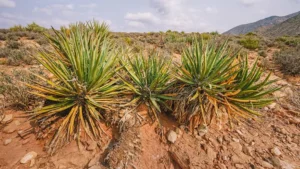

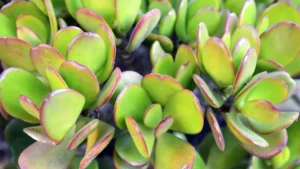
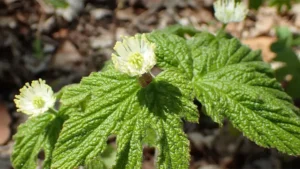
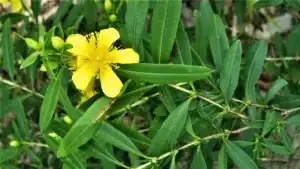

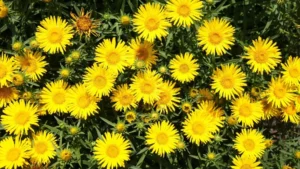
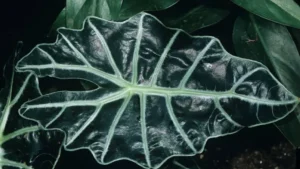
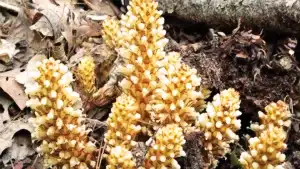
Leave your comment